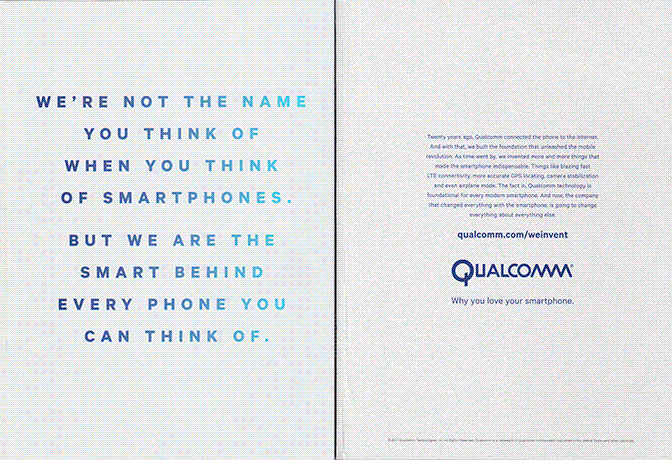Locating the Contemporary Zeitgeist
Is there really a spirit of our age anymore
This piece was originally written in November of 2017 as an essay for one of my design research courses. It has since been edited and repurposed for use on this blog. I hope you enjoy it.
In Glenn Parsons’ piece The Philosophy of Design he talks about the notion of, “[z]eitgeist, or the true ‘spirit of the age’.” This is the notion that each particular period of history has a defining ‘spirit’, which is shown through the prevailing values and ideas of the time. In the age of the internet and instant global communication, the field of graphic design has moved away from the ages of Modernist and Post-Modernist design into a new period. One whose key characteristic is its inability to define itself with a particular set of intellectual values and ideas. That is to say, the zeitgeist of the contemporary design period is its apparent lack of a prevailing zeitgeist.
During prior periods of graphic design history it was much easier to pin point the ‘spirit of the age’. Take modernism as an example. The zeitgeist of the modern movement in design can be defined by the idea that by ditching ornamentation and focusing on functionality and universality they were able to express the modern age. Modernist graphic designers intentionally rejected the ornamental styles of the past in favour of what they believed was a functional and universal visual language. However, they did not believe that the lack of ornamentation would make their designs unexpressive. They actually saw the elimination of ornamentation in their design pieces as an enrichment of them. By removing all of the unnecessary aesthetic extras in their design work, modernists graphic designers believed that their designs could be as Walter Gropius expertly put it, the “concrete expression of the life of [their] epoch”.

The Qualcomm advertisement (pictured above) is an excellent example of a graphic design piece which follows the ideas and values of Modernist movement. The first things that the viewer notices about this Qualcomm advertisement is that the background of the design is pure white, and that there is much more negative space than there is positive space. This works to create a strong visual contrast between the positive and negative space, as well as placing an emphasis on the negative space in the design piece. Furthermore, all of the elements in this design piece follow a strict structured grid system; one with which all of the elements are centre aligned within. The type on the left page uses a sleek bold sans-serif typeface, and each character has an optically equal amount of kerning. There is a gradient overlay on top of the type that goes from navy blue on the left side of the page to cyan on the right side of the page. With exception to the subtle gradient, there is absolutely no ornamentation in this design piece. The graphic designer employed a hierarchy in size and weight and colour in order to move the viewers eyes from left to right across this Qualcomm advertisement. The visual hierarchy goes from the large block of text on the left page, to the company’s wordmark and website url on the right page, and finally to the block of body copy above the company’s wordmark. The design piece is overall very simple and clean. Its utilizes its utter lack of visual pizazz in favour of overt functionality in order to make sure that this advertisement’s target audience will understand its core message.
The period that immediately followed modernism and precedes the current period of design history — aptly named Post Modernism — is also an example of a period with a fairly clear cut zeitgeist. Post Modernism was a reaction to the Modernist movement where modernism was critiqued from within. In Rick Poynor’s book No More Rules he makes mention of Charles Jencks — a famous architectural theorist and author of The Language of Post-Modern Architecture — who notes that “post modernism represented the demise of Modernism’s avant-garde extremism and a partial return to tradition.” This means that the zeitgeist of Post Modernism — although not quite as clear cut as the modernist zeitgeist — can be summed up as the sacrifice of functionality in favour of aesthetic exploration through the partial return of traditional styles and ornamentation. However it is crucial to note that — as Poynor points out — Post Modernism was created not to reject the graphic design of the Modernist movement, but as the logical step in the Modernist movement’s development by members of the Modernist design movement.

The Razer Blade advertisement (pictured above) is an excellent example of the zeitgeist of Post Modernist graphic design at work. The Razer Blade advertisement is defined by its use of dark neutrals and vivid saturated highlights. There is an abstract graphic of a computer that goes from the top left of the design to the bottom right. The keys are laid out in such a way as to create the illusion of three dimensional space and depth. The keyboard graphic has a form similar to that of an hourglass, and it appears to be far away from the viewer in the top left corner and close in the bottom right corner. This graphic also acts as a leading line, which leads the viewers eyes across the design from top left to bottom right. The viewers gaze moves from the header, “THE POWER TO MATCH YOUR VISION”, through the centred image of the sleek crushed black coloured laptop, and finally to the company logo, product name and company web address at the bottom of the design. A blocky geometric sans serif font is used throughout the design. The design is overall very busy with little negative space and elements bleeding off of multiple sides of the page. It incorporates visual ornaments in favour of functionality, making some of the type found running along the keyboard difficult to read at first glance.
But how does knowing the zeitgeists of the Modernist and Post Modernist periods in graphic design help to unveil anything about the zeitgeist of the current period in design history? First, take note that neither of the two magazine advertisements that were previously used as examples of the zeitgeists of the modern period in design and the post modern period in design are actually from said periods. In fact both designs are extremely recent examples of contemporary design, found in the same issue of the magazine Wired, only twenty six pages apart from one another. This is due to the fact that the zeitgeist of our current period is its innate lack of a prevalent zeitgeist. In his speech Atemporality for the Creative Artist Bruce Sterling states that in the contemporary world, “there is the colossally huge, searchable, public domain, which is now at your fingertips … [t]here are new asynchronous communication forms that are globalized and offshored, and there is the loss of a canon and a record. There is no single authoritative voice of history. Instead we get wildly empowered cranks, lunatics, and every kind of long-tail intellectual market”. A combination of access to too much information as well as too much access to global communication has resulted in making it impossible for any one specific movement to rise to prominence and become the ‘spirit of the age’. The present period in design lacks the ability to define itself with its own specific set of ideas and values. Thus, the contemporary designs found by flipping through any recent magazine or browsing the internet do not follow a singular set of ideas and values like the designs of modernism and post modernism. Instead, they are a mash up of the ‘spirits’ of previous ages in history accompanied by fantastical visions of the future.
To conclude, in the aftermath of modernism and post modernism there is no longer a true defining ‘spirit of the age’. Due to too much access to information and instant communication, a defining ‘spirit’ with a set of prevailing values and ideas has not been able to rise to prominence. Instead the current period is defined by its inability to define itself with a specific set of intellectual values and ideas. In the age of the internet and instant worldwide communication the zeitgeist of contemporary design has become the absence of a prevailing zeitgeist; anything goes.